IT’S an old joke on the Costa del Sol that you can always tell the tourists from the locals by the clothes they wear.
Come the first rays of spring sunshine, holidaymakers are stripped almost bare, slathered in sun lotion and even braving the sea – beer bellies, goose pimples and all – while the less stoic Spanish remain wrapped up in winter clothes.
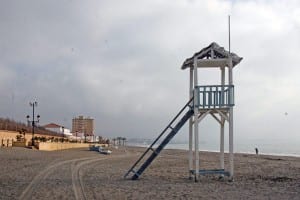
You won’t catch Jose Maria dipping so much as a toe in the water until temperatures are fry-an-egg-on-the-pavement hot.
And perhaps they are wise to be wary. For the stark truth is that Spanish beach safety laws rarely coincide with hardy holidaymakers’ off-season bathing habits, leaving many resorts with no lifeguard on duty for up to nine long months of the year.
And that’s no joke when you look at the statistics.
Drowning is the third highest cause of accidental death worldwide. A shocking 5,000 under-18s lose their lives off Europe’s coasts annually, 70% of them under six years of age.
It is impossible to tally up the millions of international tourists who are enticed by Spain’s balmy climate to take the plunge, only to find themselves out of their depth with assistance nowhere to be seen.
But 700 people die from drowning each year in Spain, and a staggering 450,000 die worldwide, according to figures from the 2012 International Lifeguarding Congress.
And this month the issue has come home to roost, when the temperatures soared into the mid-twenties – summer temperatures in northern Europe – and a Turkish deaf school teacher and two of his students drowned off Marbella’s La Venus beach.
With no warning flag flying, no lifeguards on duty and no signs alerting bathers to the dangerous spring tides and local currents there was unsurprisingly a great deal of outrage.
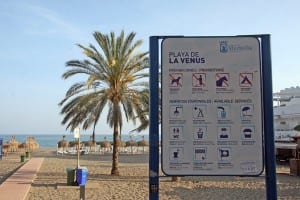
After all, how could they – and many other swimmers – have known of the hazards.
A third student survived, thanks only to a quick-thinking British A & E nurse who was fortuitously on the beach at the time, and administered CPR. It took up to 20 minutes for an ambulance to arrive, according to British bystanders.
This tragedy, more than ever before, calls Spanish beach safety into question again.
The pointless loss of life is a harsh reminder of a huge anomaly in Spain, where lifeguards are merely ‘fair weather friends’. Remember holidaymakers (and expats alike)… they’re like sun loungers and swallows – only here for the summer.
Safety measures vary from region to region but, as a basic rule of thumb, lifeguards are on duty along the Costa del Sol on a daily basis from around June 15 to September 15 and sometimes a lot less.
In some resorts, including Mijas and Manilva, for example, they are hired for three months of high season – just 90 days. In Marbella and Malaga they will show a face sporadically from Semana Santa, but cannot be relied upon on weekdays.
Meanwhile signage warning of dangers is far and few between.
We have discovered that in Marbella, for example, signs are far more focussed on boasting beach facilities.
Its two ‘most dangerous’ beaches, according to the town hall, La Venus, where the Turks drowned, and El Cabopino, do not even hint at any danger for bathers.
First Aid stations are under bolt and key and lifeguard seats stand eerie and deserted.
And as a waiter ‘Mohamed’, of Andy’s Beach Bar in Cabopino, claimed there had even been a further drowning on his beach last week too, although Marbella police refused to confirm or deny this.
As Francisco Bicas, Marbella’s head of beaches, said: “In Marbella the water is very cold so we don’t expect the bathing numbers to be high until the summer months, anyway.”
School is out for Spanish kids in mid-June and they go back to their books in mid-September. You don’t have to be Einstein to see the correlation between lifeguard duty and school holidays.
Outside those dates, you swim at your own risk.
But how risky is it? Mark Wardell, General Manager of one of the Costa del Sol’s biggest hotels Sunset Beach Club, in Benalmadena, insisted: “We firmly believe that, considering the volume of tourists, the lifeguard season on the Costa del Sol should be longer.
“The coast desperately needs more danger warnings and signs, and to extend lifeguard cover. It is the off-season when it is most dangerous, as in summer the sea tends to be pretty calm,” he continued.
“Just the day before the tragedies in Marbella we had to drag a young man out of the water in Benalmadena – people see the waves and think it looks like fun without considering the dangerous currents.”
Year in, year out, choppy waters and strong currents claim lives. And, year on year, bereaved family members and onlookers shake their heads in despair and wonder – did this have to happen? And who is responsible?
Spain boasts 8,000km of coastline and the Costa del Sol has a 300km share. If the Spanish government is liable, the task is monumental.
The Mediterranean is famous for its mostly calm, child-friendly waters but, placid though they may seem, accidents still happen.
Along the Costa del Sol, each Town Hall is responsible for subcontracting its own lifeguards to protect swimmers in high season and, crucially, to ensure they do their job properly.
For this reason, the dates of beach vigilance vary, albeit minimally, according to where you are.
And, at the time of going to press most town halls could not confirm which lifeguard companies would be looking out for townsfolk and tourists this summer.
And the simple facts are the only time they can afford to employ lifeguards is in July and August, when there is no denying the town halls do a great job in looking after their beaches and, indeed, their bathers.
It is during this time that the coloured flag system – green for ‘safe to swim’, red for ‘too dangerous to swim’, yellow for ‘exercise caution’ – is introduced and works well.
But it means that, for at least nine months of the year, warnings are either non-existent or scant at best.
With Spain rightly selling its impressive array of stunning Blue Flag beaches to the 65 million-plus tourists who will arrive on its shores this year, isn’t it time for a change?
Ultimately, bathers need to know how safe is their ‘patch’ of water, be aware of local currents and pay attention to signs, when and if they are installed.
Although it may seem that, for most of the year, it’s a case of sink or swim for hardy (or foolhardy?) holidaymakers determined to take the plunge, the tragic accidents that occasionally occur are the exception, not the rule.
Thankfully, in the majority of cases, the guy with the goose bumps and the beer belly really is waving, not drowning.
FACTFILE: Baywatch briefing
The lowdown on local lifeguard laws
YOU’LL be more likely to spot a Baywatch babe than a lifeguard on the Costa del Sol’s beaches outside high season.
A three-month lifeguard stint during high summer is the case for most Costa resorts, including Mijas and Manilva.
In other resorts, there’s a longer safety season with lifeguards on duty from June to September. But in the vast majority of cases, they don’t clock on until June 15 and they will have vanished, along with Spanish beach-goers, by mid-September.
If you’re intrepid enough to brave the water out of season, you’re foolhardy enough to pay the price, would be the implication.
Lifeguards tend to work from 11am to early evening, clocking off at 7pm in Torremolinos, 7.30pm in Marbella and 8pm in Mijas Costa and Manilva.
Marcos Vazquez of Manilva Town Hall said: “In Manilva, Sabinillas has a medical service so it is one of the safest places to be, and a maximum ambulance response time of four to five minutes across the municipality.
“Last year there were two serious emergencies in the water – but that was when the red flag was up so the warnings were there.”
Torremolinos – one of the Costa’s more seasoned resorts, swinging since the 1960s – goes further, offering protection from June 1 until the end of September. The team of 29 employees work from 11am-7pm daily during that period, and have an impressive record of zero deaths by drowning during 11 summers on duty.
Miguel Cabreras, head of civil protection for Torremolinos, said: “We’re really proud of the service we offer – from the furthest possible reach of Torremolinos, the ambulance response is a maximum five minutes and we have six first aid hot spots and six support vehicles as well.”
With 3,500 accidents on Torremolinos beaches last year, only 67 were serious enough to require hospital treatment, indicating high-quality on-beach assistance.
Other exceptions to the three-month rule are Malaga and Marbella, whose lifeguards work
every weekend from Semana Santa, going daily from June 15 for two months.
Marbella’s lifeguards, and most others on the Costa, pack up their buoyancy aids on
September 15 – the generally accepted last day of high summer – despite temperatures
averaging a sizzling 26 degrees.
Meanwhile, Malaga’s lifeguards will hang on in there at weekends until the end of the
month.
The teams are big – Marbella’s lifeguards number 40 people and cover 25 beaches,
Malaga’s contingent of 45 look after 15 beaches, while Torremolinos has a ratio
of 29 lifeguards to its six beaches.

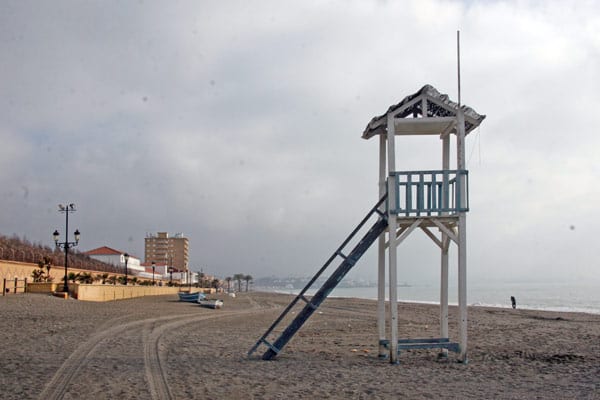



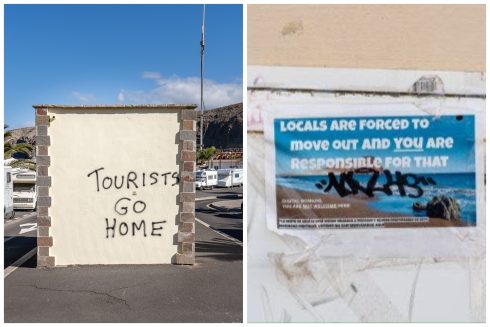

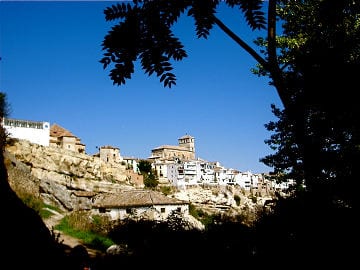

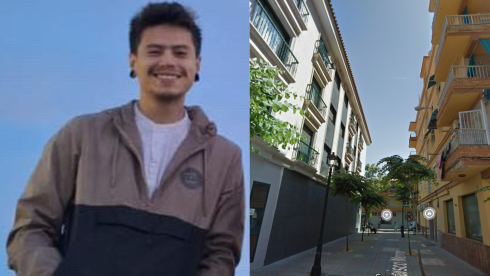


The sea in Marbella is very cold? Join me for a swim at Whitley Bay and I’ll show you what cold is like.
A very interesting and needed article. Hate to be negative about blue flags but it needs to be said. I have always wondered if the town halls each year switch black flags for blue. From Màlaga down as far as Manilva the waters are positively a danger to health. Swim when there is a levante (easterly wind) and you will find the visible residue of sanitary towels, the little plastic backing that do not disintegrate, the rubbish is visible and the rest well you can just imagine.
A well known group of ecologists, have annually given most beaches black flags. One of Marbella’s famous beaches is the outlet for a mixture of rain and wastewater.
San Pedro where a pebble beach is cleaned using heavy machinery only to have this rubbish deposited a few meters from a sandy beach. Estepona where at least two beaches face continuous sewage discharges. Those tourist enjoying lazing on the beaches of two hotels oblivious to the fact that the waste is discharged directly into the sea.
Fuengirola with the proliferation of apartment blocks lining the shores, you can leave the rest to the imagination.
Manilva in a beautiful protected area, spoilt by mountains of garbage and rubble and various points of sewage discharges.
Mijas on a Calahonda beach which had been closed due to fecal discharges.
Nerja which has no treatment plant so untreated sewage goes directly into the sea.
I could go on and on but think that is enough to make us think twice. I personally only swim when there is a poniente (westerly wind) in the belief that the waste is taken out into the Mediterranean.
The Costa del Sol is one of the most heavily populated areas during the summer months. With the few sewage plants in the area and add to this the fact that the outlets into the sea are supposedly only a km long. It does not take much to add up what the quality of the water we and our children swim in on this beautiful coastal region of Spain.
It is time we made the politicians aware that at least some of us know that most of the blue flags, have been rapidly dyed that colour.
Myra, thank you for clarifying in detail what people in the know already know. There are many blue flag beaches in Spain that are deserved of their award, but the majority of those on the Costa del Sol are not deserved of any such an award.
So what does a blue flag actually mean? Does it just refer to facilities – showers, lifeguard etc?
Today, after heavy rain in Torremolinos. I saw the sewage dump on the middle of Carihuela beach.